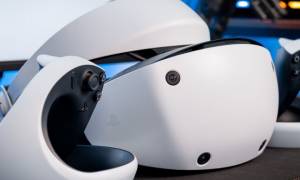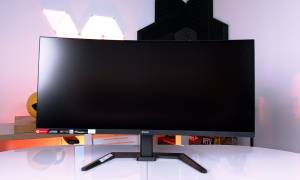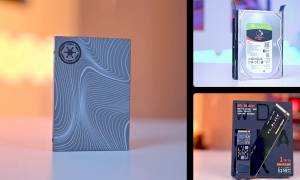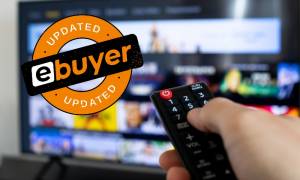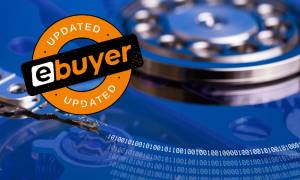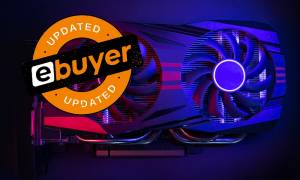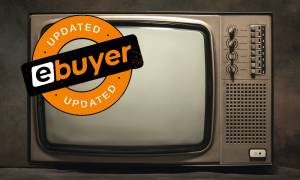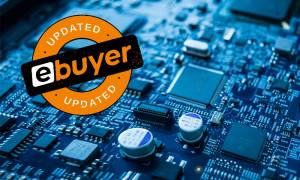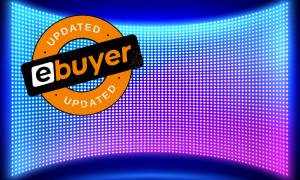- Tune your settings
- Run games at high frame rates refresh rates
- Ditch Wi-Fi for ethernet
- Keep your PC cool
- Get comfortable
- Learn from the pros
- Play on PC
- Don’t think you need a high-specced rig
- Practice, practice, practice
- Grind out those ranks
Have you got what it takes to game like a pro? Here’s our top 10 tips, including how to improve your gameplay, managing your gaming set-up, making sure you’ve got the right hardware.
1. Tune your settings
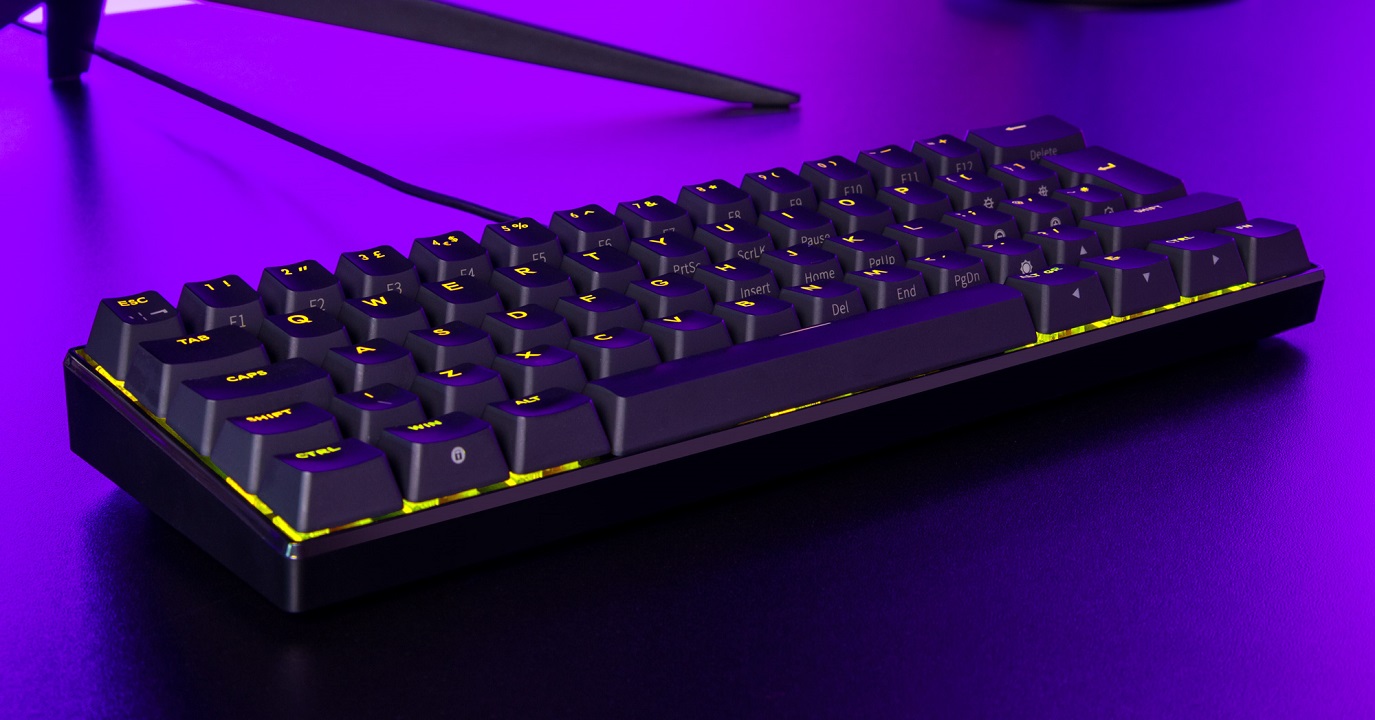 On the web, you’ll find sites that exhaustively catalogue what peripherals, accessories, and settings the top esports players use, right down to their in-game sensitivity. Knowing what exactly the pros use is insightful, but you shouldn’t blindly copy them. Rather, we recommend using them as a starting point.
On the web, you’ll find sites that exhaustively catalogue what peripherals, accessories, and settings the top esports players use, right down to their in-game sensitivity. Knowing what exactly the pros use is insightful, but you shouldn’t blindly copy them. Rather, we recommend using them as a starting point.
Try a pro’s settings out for a bit, then adjust them accordingly. Just because a pro uses a certain sensitivity doesn’t mean it’ll work for you too. You might aim better with a dots-per-inch that’s slightly higher, for instance, but you won’t know until you experiment with it.
On the other hand, don’t write off a setting just because it doesn’t make you a headshot-blasting pro instantaneously. It takes hours’ worth of practice until you really become accustomed to a given setting, but then you’ll start landing those headshots.
2. Run games at high frame rates and refresh rates
 If there’s one upgrade you’ve got to make to your set-up, it’s a high refresh rate gaming monitor. A monitor’s refresh rate, measured in hertz, describes how many times it’s updated or ‘refreshed’ every second with a new image. The higher the refresh rate, the more images you’ll see, letting you react that little bit sooner.
If there’s one upgrade you’ve got to make to your set-up, it’s a high refresh rate gaming monitor. A monitor’s refresh rate, measured in hertz, describes how many times it’s updated or ‘refreshed’ every second with a new image. The higher the refresh rate, the more images you’ll see, letting you react that little bit sooner.
99.9% of pros analysed by prosettings.net use at least a 144Hz gaming monitor, with some clocked at as fast as 360Hz. Given that a high refresh rate is considered so essential, you might’ve bought a gaming monitor already – but is it set up properly?
Even if a gaming monitor can run at a high refresh rate, that doesn’t mean it will right out of the box. Sometimes, you have to go into the monitor’s on-screen display and enabled the high refresh rate, in addition to other features like adaptive sync. We’ve seen all too many people pick up a gaming monitor, only to run it at the default 60Hz refresh rate without knowing.
Which port you hook your monitor up to can affect refresh rate as well, and your computer’s operating system has its own display settings. So, make sure to check out our blog How to Set Up a Gaming Monitor for a full walkthrough on how to enable your gaming monitor’s maximum refresh rate.
3. Ditch Wi-Fi for Ethernet
 Wi-Fi is just too unpredictable for competitive gaming. A wire-free internet connection is convenient, but it’s also more susceptible to packet loss, ping spikes, and random disconnects compared to a hard-wired ethernet connection.
Wi-Fi is just too unpredictable for competitive gaming. A wire-free internet connection is convenient, but it’s also more susceptible to packet loss, ping spikes, and random disconnects compared to a hard-wired ethernet connection.
To game like a pro, you’ll want the most reliable and stable set-up possible. Anything that can introduce a random element to your gameplay, whether that’s an angle-snapping gaming mouse or a spotty Wi-Fi signal, has got to go.
Fortunately, most desktops, laptops, and consoles are still equipped with a good old ethernet port for a rock-solid wired internet connection. Ethernet will likely be a little bit faster than Wi-Fi too, perfect for those enormous game updates.
However, the main reason many people use Wi-Fi in the first place is because they don’t have an ethernet outlet near their set-up to hook up to. That’s where powerline adapters come in.
Essentially, powerline adapters turn your home’s electrical wires into network cables. They’re incredibly easy to set up too; just plug one adapter into a socket near your router and another near your set-up, hook them up to their respective devices, and you’re good to go. Read our powerline adapters page to learn more.
4. Keep your PC cool
 In esports titles, it’s generally recommended to disable a setting called vertical synchronisation. You’ll find v-sync, as it’s known for short, in almost every game. It’s also toggleable globally in your graphics card’s control panel.
In esports titles, it’s generally recommended to disable a setting called vertical synchronisation. You’ll find v-sync, as it’s known for short, in almost every game. It’s also toggleable globally in your graphics card’s control panel.
As the name implies, v-sync synchronises a game’s frame rate to the refresh rate of your monitor. It achieves this by holding a rendered frames in a buffer and only releasing it once the monitor has finished its current refresh. This ensures that a frame is never shown in the middle of a refresh cycle, eliminating screen tearing. As these frames aren’t presented as soon as they’re ready, v-sync can smooth out frame delivery at the expense of input latency. Story-driven games benefit from v-sync as screen tearing is extremely distracting, but you’ll want it off in esports titles that demand split-second reflexes.
Given that v-sync synchronises to your monitor’s refresh rate, it’s also a frame rate limiter. On a 144Hz gaming monitor, enabling v-sync would cap the frame rate to 144 frames-per-second. Disabling it, on the other hand, would get rid of this cap entirely. While that’s good for maximising frame rate and in turn minimising input latency, it’ll likely result in your hardware – namely your GPU – being pinned to 100% usage at all times. And if your PC’s cooling isn’t up to task, your hardware will soon throttle.
In-game, throttling will manifest itself as a slower frame rate. Remember, anything that can introduce a random element to your gameplay has got to go. You can’t have your frame rate fluctuating up-and-down, making input latency erratic and hard to judge. To keep temperatures low and frames high, you need good PC cooling. Check out our blog PC Cooling – What you need to know for more info.
5. Get comfortable
 Again, consistency is key if you want to game like a pro. While they might practice for an ungodly length of time, the pros keep their set-up consistent and comfortable. Despite newer and faster technologies, may pros stick to their older gear as it’s what they’re most familiar with. After all, it’s hard to beat muscle memory.
Again, consistency is key if you want to game like a pro. While they might practice for an ungodly length of time, the pros keep their set-up consistent and comfortable. Despite newer and faster technologies, may pros stick to their older gear as it’s what they’re most familiar with. After all, it’s hard to beat muscle memory.
When you’re competing at the highest level, you want a set-up that’s easy to ‘enter the zone’ with. Whether that’s a gaming keyboard with just the right actuation force, a gaming mouse that’s moulded to your grip, or even a gaming chair.
A high-quality gaming chair will not only be comfortable, it will also encourage a healthier posture. Most gaming chairs – like the Razer Iskur – are highly adjustable with 4-D arm rests, lumbar support systems, and more. By adjusting your chair so it’s a perfect fit, you’ll be able to focus solely on the match at hand and not that awkward pain in your back.
6. Learn from the pros
Spend enough time in a game and you might think you’ve learnt every mechanic inside-out. However, games can be tremendously complex, constantly evolving through balance patches and content updates. Even if you’ve got hundreds of hours on the clock, you’ve probably just barely scratched the surface.
Let’s take League of Legends, for example. League originally launched with 40 playable heroes – now it as over 140. Even the best League of Legends esports players haven’t mastered every mechanic and intricacy of every hero. Particularly in a live-service game like League, where it only takes a slight tweak on the developer’s end to shake the meta up completely.
With hundreds of heroes, builds, and team comps, esports titles can have a daunting amount of depth. However, you don’t have to figure it out all by yourself. Why not tune into a pro’s Twitch stream and see what strategies they’ve come up with? They’ve got thousands of hours in these games. By simply watching their gameplay, you’ll pick up tons of ways to improve your own. It’s a great way to fast-track your knowledge of a game, learning all the top tips and tricks that would’ve otherwise taken you ages to discover.
7. Play on PC
 From high-budget esports tournaments to local LAN parities, you don’t have to look hard to see that PC dominates the competitive scene. That’s not to say you can’t compete on console, but the overwhelming majority of matches are fought on PC. The highest profiles esports, the ones that attract millions of followers, are all played on PC: Starcraft, League of Legends, Counter Strike, DOTA 2, and more. Most popular esports games don’t even have a console counterpart – they’re PC exclusive.
From high-budget esports tournaments to local LAN parities, you don’t have to look hard to see that PC dominates the competitive scene. That’s not to say you can’t compete on console, but the overwhelming majority of matches are fought on PC. The highest profiles esports, the ones that attract millions of followers, are all played on PC: Starcraft, League of Legends, Counter Strike, DOTA 2, and more. Most popular esports games don’t even have a console counterpart – they’re PC exclusive.
Why is PC so good for competitive gaming? One reason – out of many – is faster performance. While consoles are getting better at supporting high frames rates, topping out at 120 frames-per-second in certain modes, PCs are still leagues ahead. As covered in our Gaming Monitor Guide, running games at a high frame rate on a high refresh rate monitor sees a decrease in render-to-display latency.
Going from 60 frames-per-second (16.6ms between frames) which is common on consoles to 144 frames-per-second (6.9ms between frames) is a game-changer for motion smoothness, temporal resolution, and latency. And nowadays, 144Hz is considered the bare minimum for esports. Over at Ebuyer, we’ve got gaming monitors that’ll go up to an eye-wateringly fast 360Hz.
8. Don’t think you need a high-specced rig
 Esports titles aren’t exactly know for their ground-breaking graphics, and that’s by design. To saturate even the fastest gaming monitors, these games are optimised to hit hundreds of frames-per-second. What’s more, most esports players use ‘competitive settings’ anyway, disabling most graphical effects like shadows and ambient occlusion all in the name of faster frame rates.
Esports titles aren’t exactly know for their ground-breaking graphics, and that’s by design. To saturate even the fastest gaming monitors, these games are optimised to hit hundreds of frames-per-second. What’s more, most esports players use ‘competitive settings’ anyway, disabling most graphical effects like shadows and ambient occlusion all in the name of faster frame rates.
So, you can expect esports titles like League and Valorant to run on pretty much anything – whether that’s the PCs of internet cafes all over South Korea or a budget gaming laptop.
Looking at Valorant’s hardware requirements, the game only calls for an Intel Core i5 9400F/AMD Ryzen 5 2600X CPU and a NVIDIA GTX 1050 Ti/AMD Radeon R7 370 GPU. Some of these components released way back in 2015, and even at the time of their release they were considered decidedly mid-range.
If you’re looking to pick up a computer to get in on the esports action, you don’t have to break the bank and spring for the latest, most powerful CPUs and GPUs. A specced-out gaming PC will net you even faster frame rates, but a budget gaming PC is enough for a rock-solid frame rate in most esports titles.
9. Practice, practice, practice
Decking out your set-up with the flashiest gaming gear won’t make you a pro overnight. If you really want to game like a pro, you’ve got to put the hours in. When not competing in a high-stakes tournament, esports pros will practice day-in, day-out. Grinding away at a game for 16 hours a day isn’t unheard of in the competitive scene. To practice, a pro’s day might consist of some solo queueing, scim matches against other esports teams, analysing post-match replays, and more.
It’s a lot, but don’t be discouraged if you’re just trying to get better in your free time. Remember, these pros represent the top one percent of the top one percent in games with enormous player bases. If you practice and try to actively improve for even a fraction of the time the pros do – instead of just throwing yourself into the meat grinder that is ranked queue – you’ll be way ahead of millions of other players.
10. Grind out those ranks
To queue up for ranked match after ranked matched, even if you’re on a losing streak, requires strong determination. Outplaying your foes with smart tactics and teamwork can feel bliss, but that winner’s high likely won’t last for long.
A game can quite easily serve you up a series of poor matches, seemingly through no fault of your own. When you’re right on the cusp of climbing to the next rank, it’s devastating only to be match-made with griefers and intentional feeders. Sometimes, it can feel as if a game is conspiring to tank your ELO and wipe off any progress you make.
At this point, it’s tempting to turn to the game’s forum and go on a rant about how “you’re in the wrong rank.” As frustrating as it is, you can’t let the losses get the better of you. To reach the point they’re at now, the pros no doubt faced their fair share of trolls. To game like a pro, you’ve got to grind through the losses and focus on improving your gameplay.
Game like a pro at Ebuyer
Gaming keyboards, mice, monitors, and more – get all your gaming gear at Ebuyer. Check out our blog The gear you need for esports for a list of the top components, peripherals, and accessories needed to stay at the top of the game.


